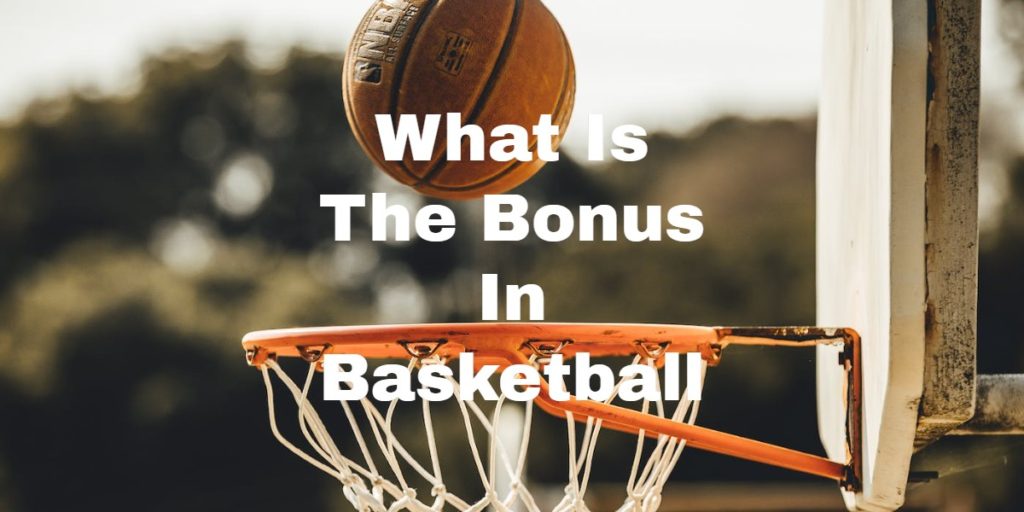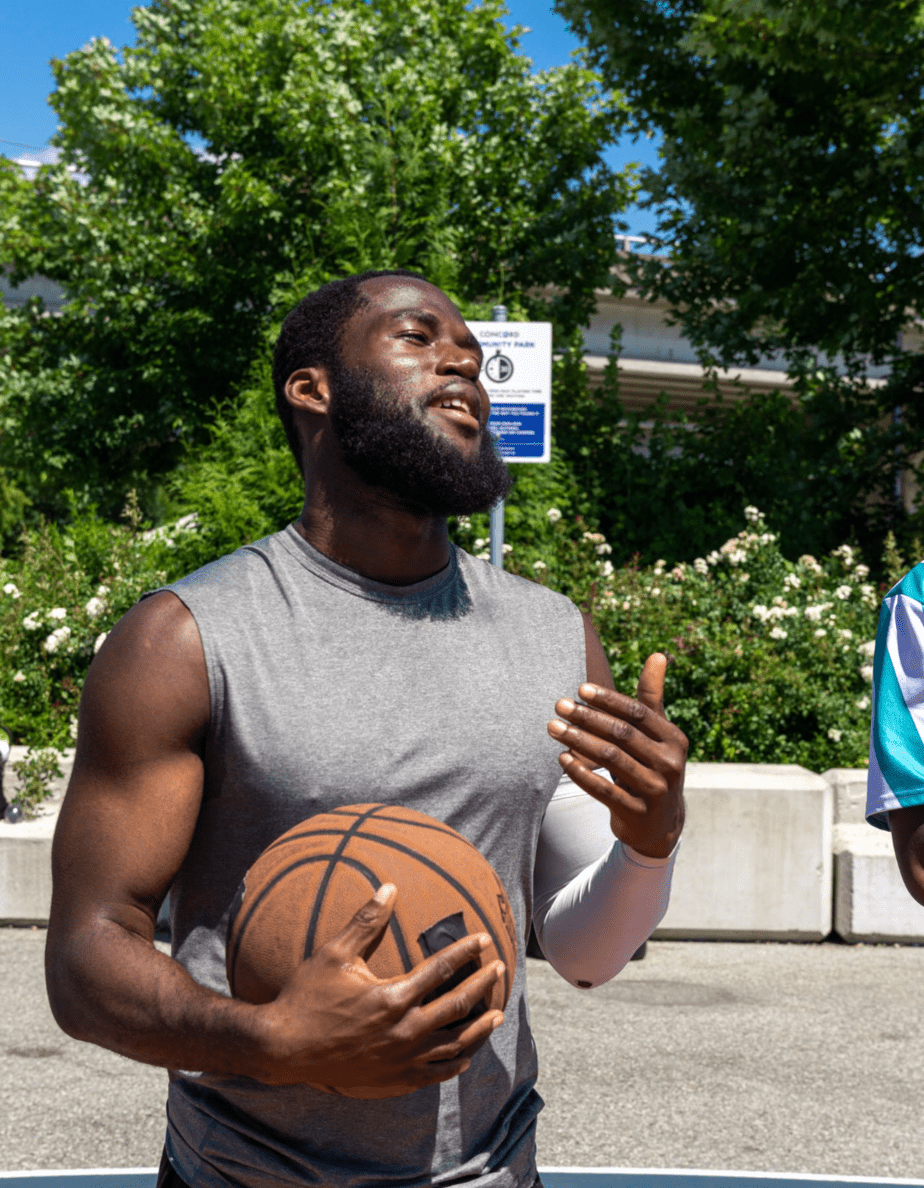The Bonus Rule in Basketball Explained For NBA, FIBA NCAA and High School
I had just finished writing an article about the one and one in basketball. And of course, most of us know it is also referred to as the “bonus”. I just didn’t realize that the question What is the bonus in basketball could be so complex. One of the things that often trip up fans is the concept of the bonus and how it is implemented across leagues. If you found this and are just looking for a good definition, I will get that out of the way first and then move onto some detail and nuance by league.
What Is The Bonus in Basketball?
The bonus in basketball occurs when a team commits five fouls in a quarter (NBA), resulting in free throw opportunities for the opposing team on each subsequent foul.
This rule is a strategic game element affecting offensive and defensive tactics. It’s important to note that the bonus situation resets at the end of each quarter in the NBA (and now in High School) and FIBA and in the NCAA, it resets at the end of each half.
The Gift That Keeps on Giving
Once you’re in the bonus, every foul committed by the opposing team (that’s not offensive or loose ball) sends you to the free-throw line, even if you weren’t shooting when the foul happened. And for those of you with a hunger for more, if a team commits its seventh foul in a half during an NCAA game, they’re in the so-called “double bonus,” which means two free throws are awarded for every foul.
Double Bonus vs. Bonus
Let’s now drill down on the double bonus vs. bonus. Growing up, I always considered the bonus being that extra shot you got when you made your first free throw. It was interchangeably called the one and one. The one and one, most recently, has been under siege with United States high schools changing the rule to give a player two shots when they hit the bonus.
| League | Fouls for Bonus | Fouls for Double Bonus |
|---|---|---|
| NBA | N/A | 5 per quarter |
| NCAA | 7 per half | 10 per half |
| High School | N/A | 5 per quarter |
| FIBA | N/A | 4 per period |
To make things even a little more confusing in the NBA there is a caveat. The bonus will begin with a team’s fifth foul in a quarter or two fouls within the last two minutes of a quarter. They add that extra consideration for the last two minutes of a quarter.
I am old school and loved the nuance of having 3 fouls (7th, 8th, and 9th) where you had the one and one before getting two shots on the 10th foul. But the NCAA is now the final holdout with that rule.
The Basketball Basics
Let’s warm up with a layup drill covering the basic rules of basketball. You’ve got two teams, each trying to outscore the other by shooting the ball through their opponent’s hoop. It’s not a free-for-all, though. Oh no, there’s a playbook of rules thicker than Shaq’s biceps, governing everything from traveling to dribbling to fouls. We are going to focus on fouls, which can be a strategic piece of the game.
Fouls in Basketball
Fouls in basketball are categorized by levels of severity.
There are three main types of fouls:
- Personal fouls, which include any illegal physical contact.
- Technical fouls, which are, well, technical. They involve non-physical infractions, like unsporting behavior.
- Flagrant fouls, the bad boys of the foul world, involve unsportsmanlike conduct with excessive or unnecessary force.
For more detail on each type of foul, you can take a peek at the official NBA rulebook.
How the Bonus Shapes the Game
The beauty (and occasionally, the heartbreak) of basketball is how rapidly the game can pivot. A team in the bonus can capitalize on this rule to mount a comeback or extend a lead. When my team is having a tough shooting night I want them to relentlessly take it to the hoop to start drawing fouls so we get in the bonus quickly to start getting free throws. Once your team is in the bonus defenses often have to adjust their strategy and not play as physical of defense.
Keep the Ball Rolling
We hope this post helped you answer the question of What is the bonus in basketball. If you want details on another complex rule check out our post on the restricted zone.
Frequently Asked Questions
What does it mean to be ‘in the bonus’ in basketball?
A team is ‘in the bonus’ in basketball after the opposing team commits a certain number of fouls. In the NBA, that number is five fouls in a quarter. Once in the bonus, any subsequent foul committed by the opposing team will send the team in the bonus to the free-throw line for at least one shot.
What’s the difference between the bonus and double bonus in basketball?
In basketball, the ‘bonus’ situation occurs when the opposing team has committed a certain number of fouls (five in the NBA). A ‘double bonus’ situation, which is applicable in NCAA games, happens when the opposing team commits ten or more fouls in a half. In a ‘double bonus’ situation, two free throws are awarded for every foul.
How does the bonus situation impact the strategy of a basketball game?
The bonus situation can greatly impact the strategy of a basketball game. Teams in the bonus can draw fouls to get free throws, giving them a chance to score points without time running off the clock. On the other hand, the team giving up the bonus must avoid fouling, which can alter their defensive strategy.
Does the bonus reset in basketball?
Yes, the bonus situation resets in basketball. In the NBA, it resets at the end of every quarter, while in NCAA, it resets at the end of every half.
Can the bonus situation change the outcome of a basketball game?
Absolutely. The bonus situation can directly impact the outcome of a basketball game. Teams in the bonus can gain additional points from free throws, which can be especially crucial in close games. It can change the game’s pace and how teams play both offensively and defensively.

Troy Wallace
Troy Wallace is Certified Basketball Speed Specialist and shares his experiences in trying to stay as healthy as possible to stay on the court. He is active in coaching youth basketball in YMCA, Team Work Sports Nebraska, and, currently, in the Jr. Warriors program in Omaha, NE. Visit Troy's Full Author Bio Page or email him directly.
Meaningful conversations happening daily about training, recovery, and injury-specific rehabilitation as well as sport-specific discussions on playing, coaching and refereeing your favorite sport. We welcome experts and those with curious minds seeking answers.
Join The Stay On The Court Community!